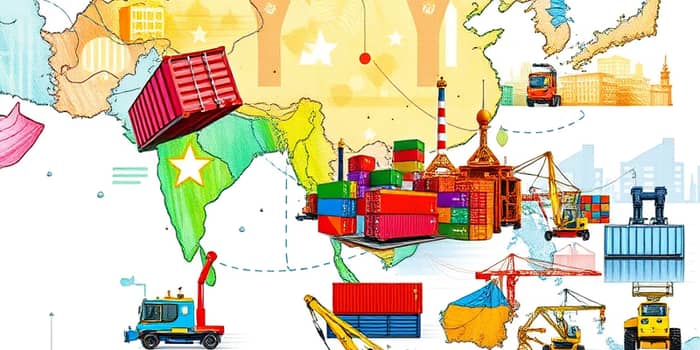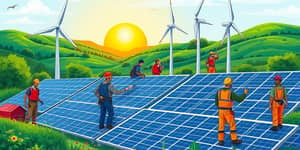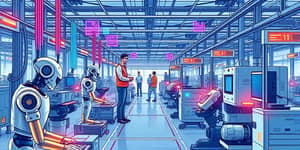
The global economic landscape has been profoundly altered by the ongoing U.S.-China trade war, which first erupted in 2018 and escalated further in 2025 with additional tariffs. These measures, primarily targeting high-tech exports such as electronics, semiconductors, and telecommunications equipment, have introduced significant uncertainty into established supply chains.
As a result, multinational corporations are reevaluating their production footprints, often electing to relocate or expand manufacturing operations to more tariff-friendly jurisdictions. This article explores how these shifts are unfolding across Asia, the strategic responses from major economies, and the broader economic and social implications of this reconfiguration.
China, once the undisputed world factory, has seen its manufacturing growth slow to a 17-year low, with industrial output growth declining to 5.0% in 2019. The imposition of US tariffs, which peaked at over 145% before being scaled back to around 30%, has significantly raised the cost of Chinese exports.
In response, Beijing has implemented substantial government-led industrial subsidies and enacted tax cuts valued at US$324 billion (CN¥2.3 trillion) to support domestic producers. Tariffs on non-US imports have also been trimmed from 8.0% to 6.7%, part of a broader strategy to maintain competitiveness against heightened international pressures.
Simultaneously, China is redoubling its focus on advanced sectors, channeling investment into robotics, AI, quantum computing, and green technologies. These measures aim to mitigate the breadth of industrial subsidies required to sustain manufacturing output and to cultivate future engines of growth beyond low-cost assembly.
The China+1 strategy driving relocation has accelerated the migration of production to Vietnam, Indonesia, and Malaysia. These nations combine cost advantages with strategic trade agreements to attract multinational investment.
To illustrate key metrics, the following table summarizes pivotal data points associated with these shifts:
Government initiatives in these countries include vocational training programs aiming to produce 50,000–100,000 semiconductor technicians by 2030, underlining a concerted push toward higher-value manufacturing.
High-tech industries under pressure from tariffs have also found new footholds in Japan, South Korea, and Taiwan. Although each nation faces modest US tariffs—7.5% on automotive goods and 10% on base metals for Japan—they are less impacted compared to China, making them attractive alternatives for high-precision manufacturing.
In Taiwan and South Korea, the capital-intensive nature of semiconductor fabs has not deterred expansion. Both economies benefit from established R&D ecosystems and strong links to global tech companies, helping to maintain momentum in chip production.
These East Asian powerhouses illustrate how rapidly evolving global supply chains can adapt even within high-barrier industries—though the gestation period for new capacity remains significant due to the complexity and cost of advanced manufacturing facilities.
India stands out as relatively insulated from direct US tariff pressures, positioning it to capture some migrating production. Nonetheless, constraints such as high energy costs and infrastructural bottlenecks limit the pace of industrial growth.
Efforts to reform labor laws and invest in power generation are underway, but companies often cite logistical challenges—port congestion and inland transport—as hurdles to scaling up manufacturing at the speed required by global supply chains seeking swift alternatives to China.
The realignment of manufacturing across Asia carries profound economic and geopolitical reverberations. On the US side, studies of the “China Shock” highlight persistent job losses and regional polarization in manufacturing sectors.
These shifts underscore a larger contest for technological leadership. Competition in green technology, biotech, and AI will likely intensify as nations vie for dominance in next-generation industries.
Looking ahead, the panorama of Asian manufacturing will continue to evolve under the dual pressures of tariff regimes and technological advancement. Companies face the challenge of balancing cost, proximity to markets, and supply chain resilience.
Ultimately, the shifting of manufacturing hubs across Asia is not a temporary reaction but a strategic recalibration that will shape global trade for decades. Stakeholders who anticipate these trends and invest in innovation, infrastructure, and human capital will be best positioned to thrive in a rapidly changing industrial ecosystem.
References













